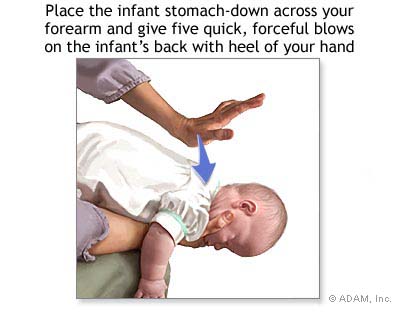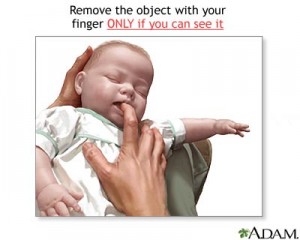American Academy of Pediatrics Releases New Policy Statement on Choking
Choking is a leading cause of injury and death among children, especially those younger than 4 years of age. The majority of choking-related incidents among children are associated with food, coins and toys. A new policy statement from the American Academy of Pediatrics (AAP), led by a doctor at Nationwide Children’s Hospital and published in the February 22 online issue of Pediatrics, takes a closer look at preventing choking among children.
On average, a child will die every 5 days in the United States from choking on food. However, too little attention is paid by government agencies and food manufacturers to minimizing choking risks. Although some food manufacturers voluntarily place warning labels on high risk products, more work needs to be done to implement safety standards for all high risk foods in regard to choking.
“We have laws and regulations in this country that require warning labels to be placed on toys that pose choking hazards, and we have systems that monitor and recall consumer products that pose a risk,” said the policy’s lead author Gary Smith, MD, DrPH, director of the Center for Injury Research and Policy at Nationwide Children’s Hospital.
“However, there are no such regulations on high risk foods - and children are much more likely to put food in their mouths than a toy.”
According to the policy statement, the AAP recommends:
• Warning labels on foods that pose a high choking risk
• A recall of food products that pose a significant choking hazard
• The establishment of a nationwide food-related choking-incident surveillance and reporting system
• A commitment from food manufacturers to design new food and redesign existing food to minimize choking risk, to the extent possible
 Parents and caregivers should also be made aware of foods that could be choking hazards. The risk of choking depends on the shape, size and consistency of the item, along with the developmental and behavioral capabilities of the child. Many foods that are thought to be “kid friendly” are actually dangerous. Foods like grapes, popcorn and nuts can easily become lodged in a young child’s throat or lungs. Hot dogs pose the greatest risk, as they cause more choking deaths than any other food.
Parents and caregivers should also be made aware of foods that could be choking hazards. The risk of choking depends on the shape, size and consistency of the item, along with the developmental and behavioral capabilities of the child. Many foods that are thought to be “kid friendly” are actually dangerous. Foods like grapes, popcorn and nuts can easily become lodged in a young child’s throat or lungs. Hot dogs pose the greatest risk, as they cause more choking deaths than any other food.
“If you were to design the perfect plug for a child’s airway, you couldn’t do much better than a hot dog,” said Dr. Smith, also a Professor of Pediatrics at The Ohio State University College of Medicine. “It will wedge itself in tightly and completely block the airway, causing the child to die within minutes because of lack of oxygen.”
 In order to prevent choking, parents and caregivers can do their part by following these safety tips:
In order to prevent choking, parents and caregivers can do their part by following these safety tips:
• Do not give children younger than 4 any round, firm foods unless they have been cut into very small pieces. Cut hot dogs lengthwise and cut grapes into quarters. This changes the dangerous round shape that can block a young child’s throat.
• Do not give toddlers other high risk foods, such as hard candy, nuts, seeds and raw carrots.
• Never let small children run, play or lie down while eating.
• Keep coins and other small items out of reach of young children at all times.
• Carefully read warning labels on toys before giving them to young children.
• To check if a part of a toy is too small, use a small parts test device, which is available at many toy stores.
• Additionally, parents and caregivers should learn first aid for choking and Cardiopulmonary resuscitation (CPR) in the event a choking episode occurs.
The Center for Injury Research and Policy (CIRP) works globally to reduce injury-related pediatric death and disabilities. With innovative research at its core, CIRP works to continually improve the scientific understanding of the epidemiology, biomechanics, prevention, acute treatment and rehabilitation of injuries. CIRP serves as a pioneer by translating cutting edge injury research into education, advocacy and advances in clinical care. Learn more about the Center for Injury Research and Policy at http://www.injurycenter.org. While visiting our website, sign up for the RSS feed in the What’s New section of our Media Center to receive e-mail updates of our latest news.
Source: Nationwide Children’s Hospital